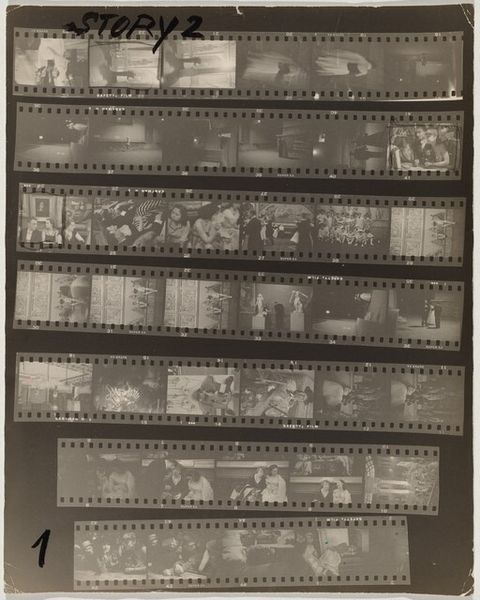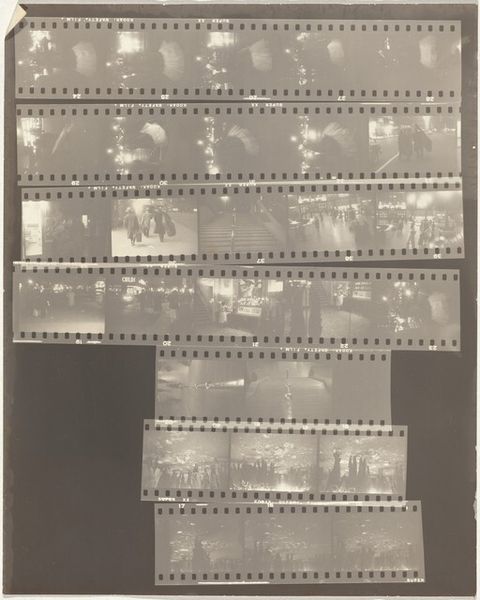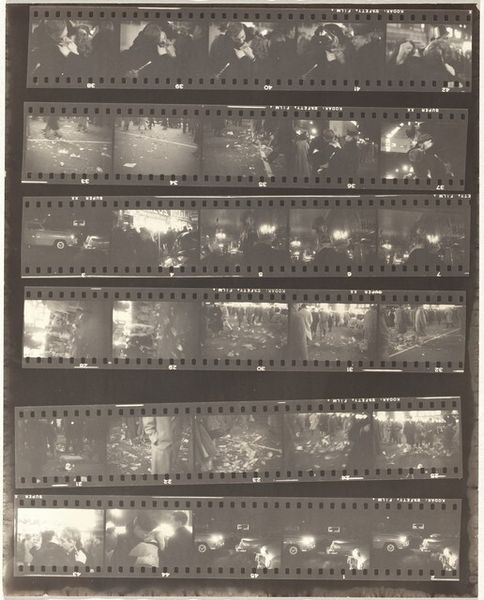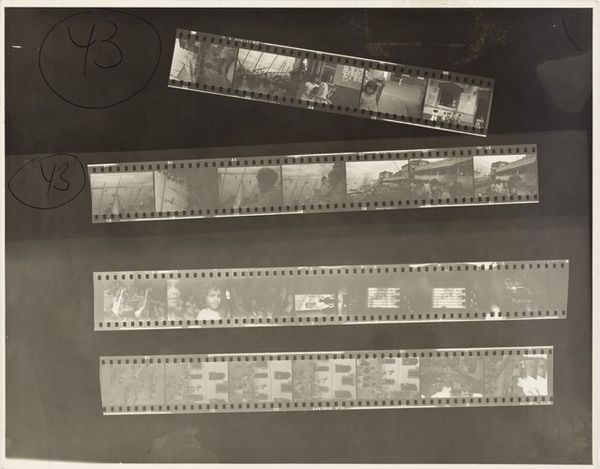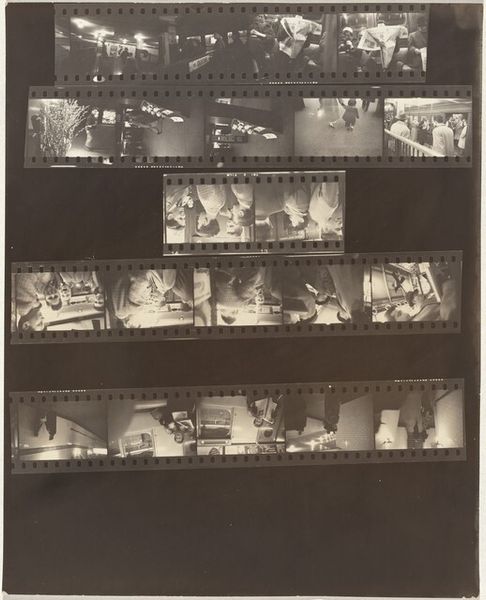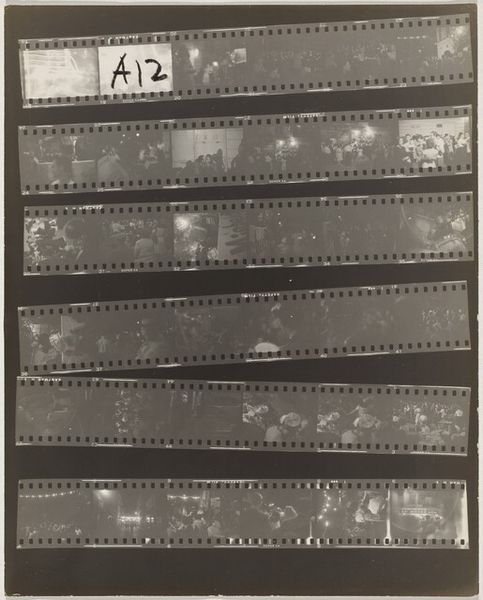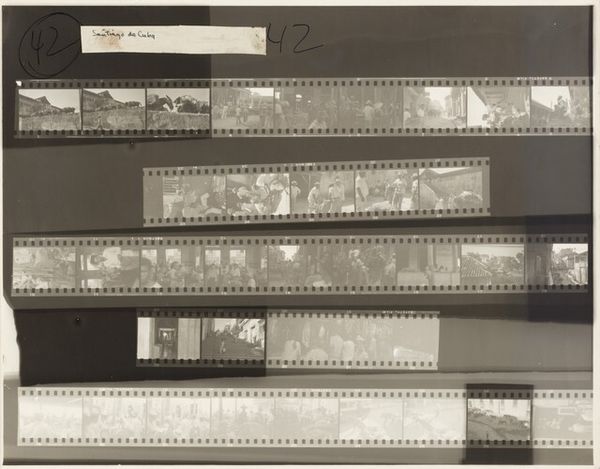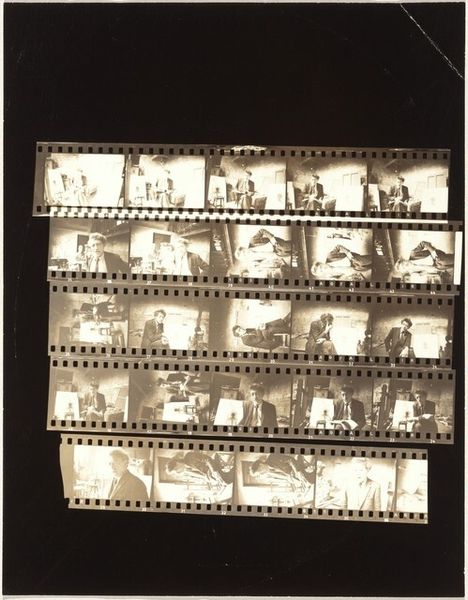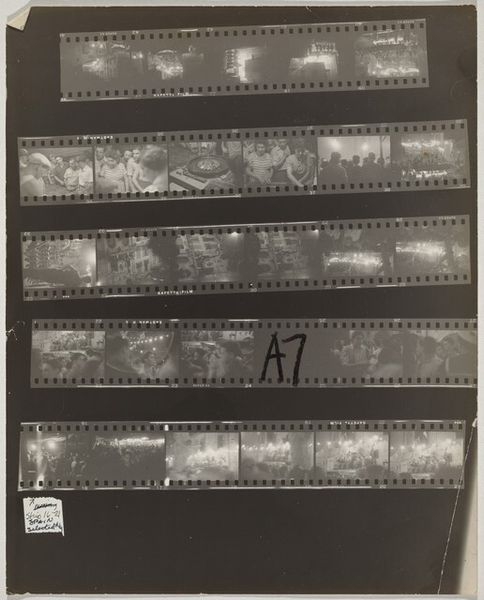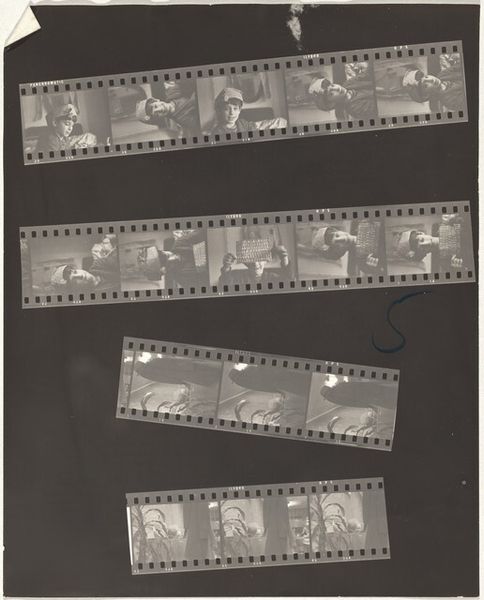
print, contact-print, photography, gelatin-silver-print
# print
#
contact-print
#
street-photography
#
photography
#
gelatin-silver-print
#
realism
Dimensions: overall: 29.8 x 23.8 cm (11 3/4 x 9 3/8 in.)
Copyright: National Gallery of Art: CC0 1.0
Editor: This is Robert Frank's "Bal des Beaux Arts 3," a gelatin silver print contact sheet from 1949. I’m struck by its rawness, the unedited look. What's your interpretation of this piece, especially considering its form? Curator: Well, consider the means of production. Frank isn't presenting a finished image; he’s showing us the working material – the contact sheet. The materiality itself is important here, the very celluloid base of the "safety film," meticulously developed with silver halides and revealing a glimpse into a societal spectacle. Do you think that has implications on its artistic intention? Editor: Definitely. By displaying the contact sheet, isn't he rejecting the notion of the decisive moment, and drawing our attention to the labour and process behind capturing these fleeting moments, thus deconstructing the romantic ideal of the photographer as a lone genius? Curator: Precisely. Think about what’s being consumed here too. The image isn’t just depicting a party. We’re also presented with an industrial process that turns social events into consumable imagery, feeding into broader social trends. The gelatin silver print transforms a 'Bal' into a commodity. Editor: That’s fascinating. I hadn’t thought about the industrial aspect of image making in that way before. So, even something seemingly artistic and candid, like street photography, is intrinsically linked to material production and societal consumption. Curator: Exactly. Frank compels us to question not just the image, but the act of imaging itself and how cultural experiences are packaged and traded through different processes. The “how” it was created and displayed is central to its significance. Editor: That gives me a whole new appreciation for the piece. I went in thinking about street photography, but now I am realizing there are commentaries on manufacturing as a reflection of that era. Thanks for helping me see that.
Comments
No comments
Be the first to comment and join the conversation on the ultimate creative platform.

